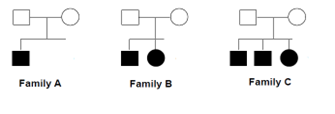TLS Online TPP Program
More Questions
TLS Online TPP Program
#Question id: 23160
#Unit 13. Methods in Biology
Texas is a fluorescent dye which emits a colour?
TLS Online TPP Program
#Question id: 23161
#Unit 13. Methods in Biology
A classically used fluorescent dye which emits a orange light is?
TLS Online TPP Program
#Question id: 23162
#Unit 13. Methods in Biology
Match the fluorescent dyes in column I with emission light in column II
Column I Column II
1. Texas a. far red
2. Fluorescein b. red
3. Rhodamine c. blue
4. Cy5 d. green
Which of the following option comprises all correct matches?
TLS Online TPP Program
#Question id: 23163
#Unit 13. Methods in Biology
Out of the given below alexa dyes which one will emit in red light range?
TLS Online TPP Program
#Question id: 23164
#Unit 13. Methods in Biology
Out of the given below alexa dyes which one will emit in Blue light range?
TLS Online TPP Program
#Question id: 23165
#Unit 13. Methods in Biology
For visualizing two proteins which are localized in nucleus through fluorescence microscopy which two sets of dyes can be best used for clear visual?

